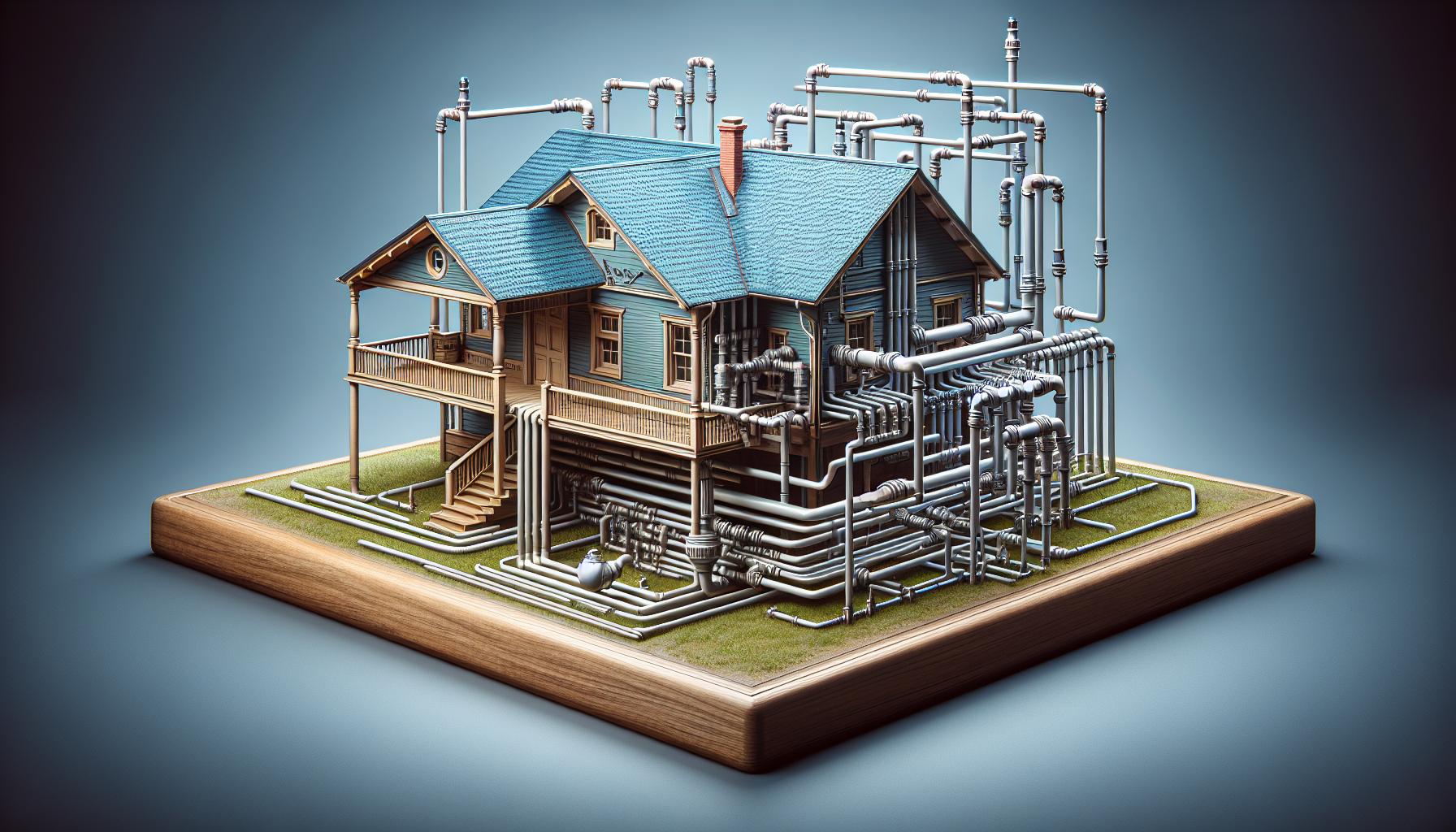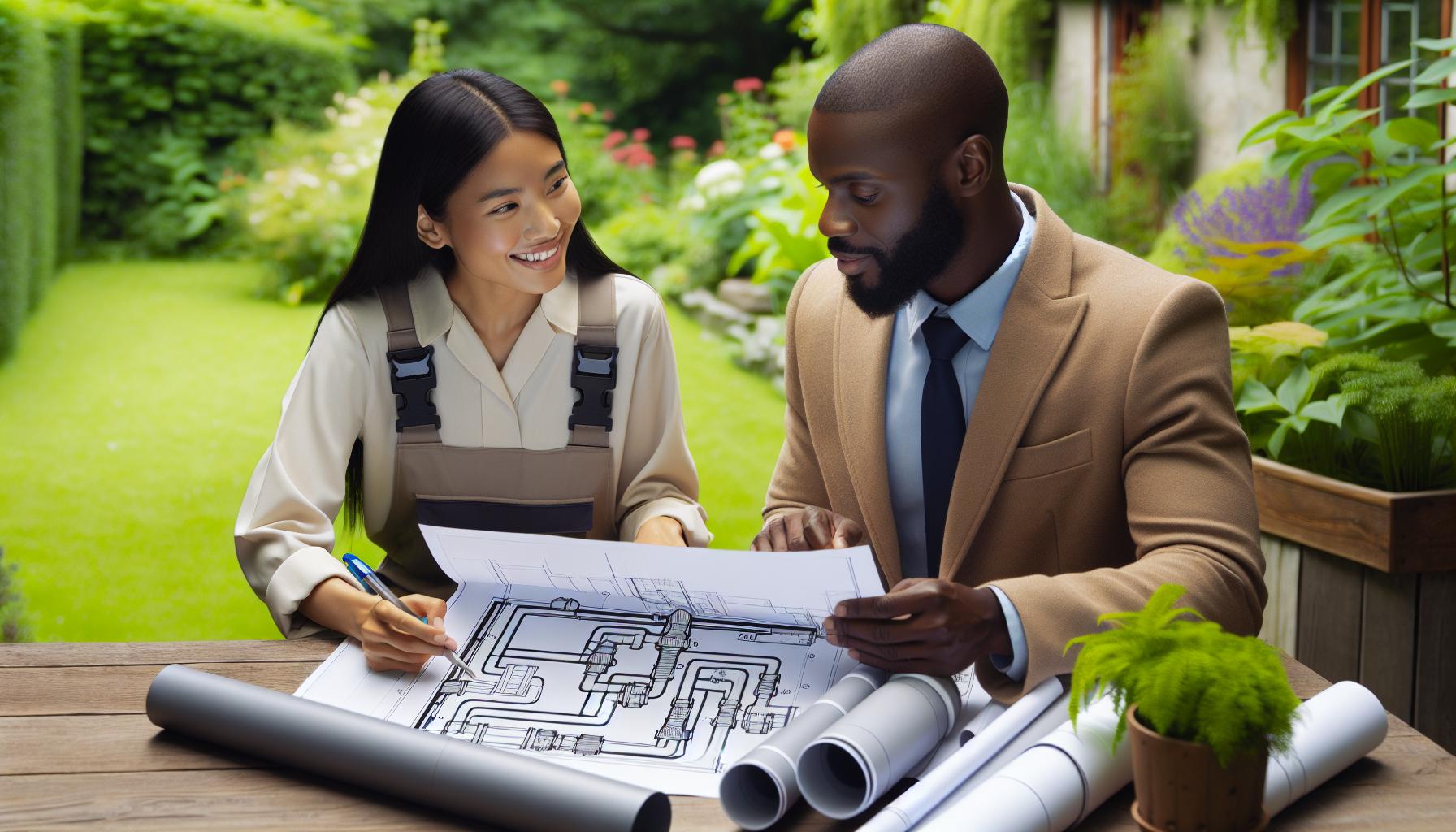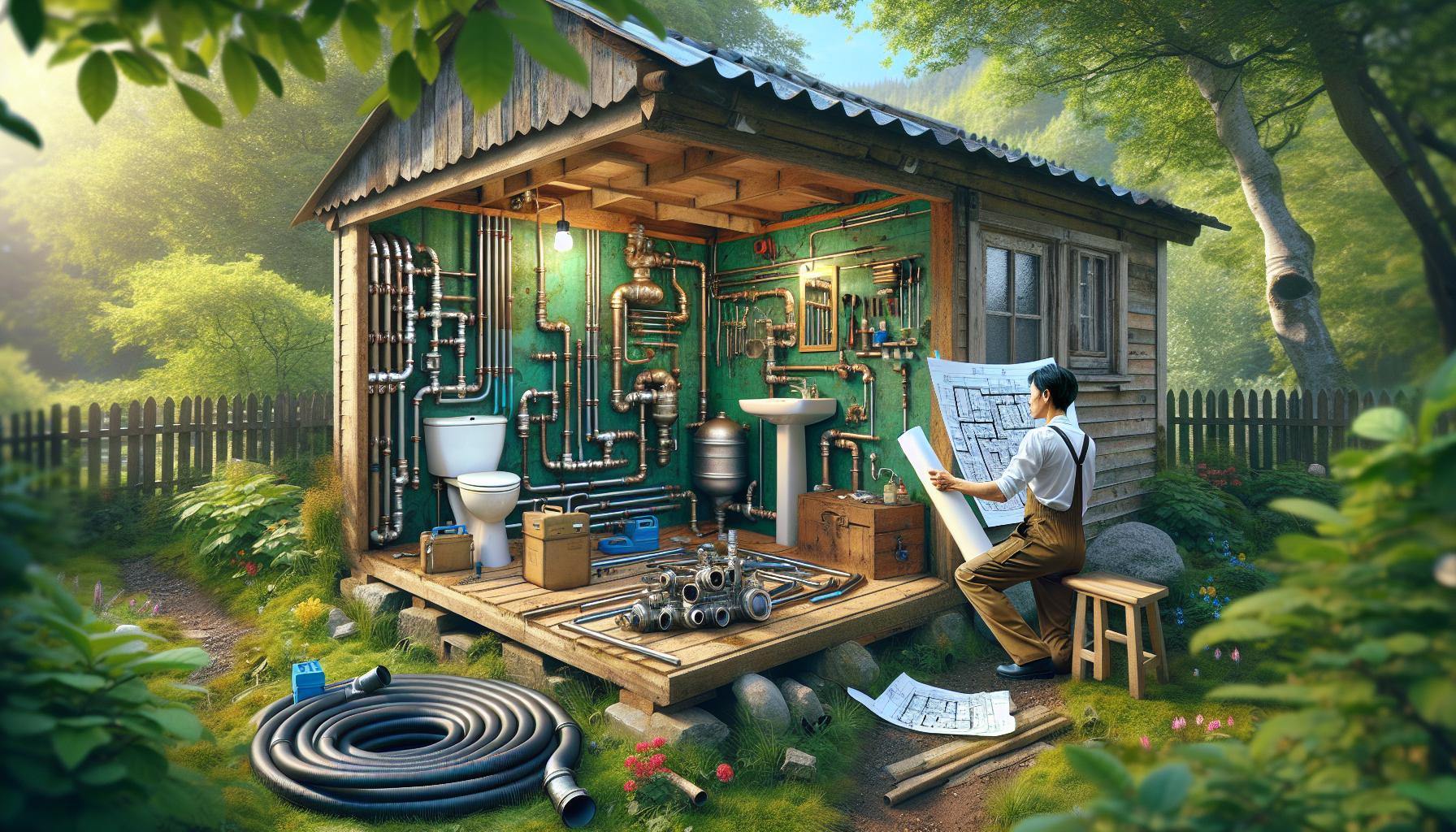Adding a Bathroom to Your Outbuilding: Key Considerations
Ever thought about adding a bit of comfort to your garden studio, office, or gym by installing a bathroom? It's a game-changer, isn't it? Imagine the convenience of not having to trek back to your main house every time nature calls during a workout session or in the middle of a creative spree. Well, you're not alone in pondering this upgrade. It's a hot topic among homeowners looking to maximise their outbuilding's potential.
But, can you actually put a bathroom in your outbuilding? It seems like a straightforward question, yet it's packed with considerations – from plumbing to permissions. Before you start planning your ultimate garden retreat, let's jump into what it really takes to add that all-important bathroom. It's like chatting over a fence with a neighbour who's already navigated the maze of regulations and practicalities. So, grab a cuppa, and let's get into it. You might just be surprised at what's possible.
Regulations and Permissions
Diving into the world of outbuilding upgrades, adding a bathroom might seem as straightforward as piecing together a jigsaw puzzle. But, it's a bit more complex, with regulations and permissions playing the critical roles of corner pieces.
First off, planning permission might not be your first thought, but it’s paramount. Picture this: you're planning a cosy cabin in the woods feel for your garden studio, and a bathroom is the cherry on top. Before you start dreaming up tile designs, check with your local council. Depending on your location and the specifics of your outbuilding (size, distance from the main house, intended use), you may not need planning permission if your project is considered permitted development. But, crossing the T’s and dotting the I’s with your local planning authority can save you a headache later. Think of it as asking for directions before a road trip - it’s better to be safe than sorry.
Next up, building regulations are the unsung heroes of construction projects. While not as glamorous as picking out your new rain shower head, they ensure your new bathroom will be safe and properly constructed. These regulations cover everything from drainage to electrical work. If you're adding plumbing and electrical work into the mix, you’ll need to notify your local building control department. Imagine it's like baking a cake, and these regulations are the recipe - you wouldn’t want to forget any key ingredients or steps.
A common pitfall in this process is underestimating the importance of professional advice. Much like how you wouldn't diagnose a rare disease without a doctor, don't navigate the labyrinth of planning and building regulations without consulting an expert. Architects, surveyors, or specialised builders can provide invaluable insight and ensure that your project complies with all local regulations and permissions.
Remember, each council may have different requirements and interpretations of the regulations. It’s like ordering tea across the UK; what’s expected in one cafe may be different in another. Always check with your local authorities to ensure you're meeting the specific needs of your area.
In essence, integrating a bathroom into your garden outbuilding is entirely within reach, provided you play by the rules. With the right preparation and professional guidance, you can turn your dream into a reality without falling foul of local laws.
Plumbing Considerations

Adding a bathroom to your garden studio or office isn't just about nailing some tiles and fitting a sink. It's a bit like putting together a complex puzzle where every piece needs to fit perfectly. Plumbing is one of those crucial puzzle pieces, and getting it wrong can lead to more than just a bit of inconvenience.
First off, you'll need to think about water supply and waste disposal. Imagine your garden building is a little island, and for it to function, you need to connect it to the mainland (your main house). For water supply, this could mean extending your existing plumbing system or even installing a new one, which, let's be honest, can sound a bit daunting. But fear not, with the right approach, it's perfectly manageable.
One common misconception is that if your garden studio is closer to your house, plumbing will be simpler and cheaper. While proximity can reduce complexity, it doesn’t always make things less expensive if significant groundwork is needed to lay pipes. It’s like assuming just because you live closer to a supermarket, your groceries will cost less—not necessarily true, right?
Speaking of waste disposal, you've got a couple of options: connect to the main sewer system or consider installing a septic tank or a compact sewage treatment plant. The latter might sound a bit high-tech, but in certain situations, especially where connecting to the main sewer is challenging, they can be a game-changer.
Avoiding common pitfalls starts with thorough planning. Skipping the groundwork—quite literally in this context—can lead to unexpected issues down the line, like discovering that the slope of your garden makes natural drainage difficult, or worse, impossible without major work.
Different techniques come into play depending on the specifics of your project. For example, if you're dealing with a sloped garden, a sewage pump might be required to help waste travel uphill to the sewer. It's a bit like installing a lift in a building without one – it makes reaching the top floor (in this case, the sewer) much easier.
In terms of incorporating these practices into your project, consulting with a professional plumber early on is your best bet. They can offer tailored advice based on your specific situation and help you navigate the often complex world of permits and regulations. Think of them as your guide in this plumbing adventure, ensuring you make informed decisions every step of the way.
Water Supply and Drainage

When you're thinking about adding that all-important bathroom to your garden office or studio, the twin pillars you'll need to tackle first are Water Supply and Drainage. Imagine your garden building as a mini version of your house. Just like your home, it needs a reliable way to get water in and out.
You might think, "It’s just a bit of piping, right? How hard can it be?" But there’s a bit more to it. Getting water to your outbuilding is akin to laying a mini lifeline from your main house. It's not just about attaching a hose; it involves digging trenches, laying pipes that won’t freeze in winter, and ensuring everything is up to code. It’s a bit like setting up a campsite far from a water source – you need to ensure you have a reliable, safe way to carry water to your site without it getting contaminated on the way.
Avoiding Common Mistakes
One common pitfall is underestimating the complexity of the job. It’s not uncommon for folks to assume they can DIY the plumbing after a quick trip to the hardware store. But, without the right tools, expertise, and permits, you could end up with a flooded garden or, worse, a fine.
Do consult a professional plumber for a detailed plan.
Don't forget to check your local building regulations and codes.
Techniques and Methods
Depending on how your garden lies and the distance from your house, different techniques for water supply and drainage might be necessary. For example, if your garden slopes away from your house, gravity could be a friend or a foe. In such cases, a pump might be required to ensure water flows correctly and does not stagnate, acting like a tiny heart pumping life into your bathroom.
For drainage, the two paths most travelled are connecting to your main sewer line or installing a septic system. The former is straightforward if costly, while the latter is an eco-friendly option that requires more space and maintenance.
Connecting to Main Sewer Line: Ideal for those closer to their home or municipal lines.
Septic System: Best for larger plots further from existing sewer connections.
Waste Disposal
When considering adding a bathroom to your garden studio or office, waste disposal is a chunk of the puzzle you can't afford to ignore. It might not be the most glamorous aspect of your build, but it's certainly one of the most crucial. Getting this wrong could have you knee-deep in trouble, both literally and metaphorically. So, let's break it down in simple terms you can easily wrap your head around.
First off, the common misconception is that waste disposal is a straightforward affair, akin to taking out your daily rubbish. But, the reality is far more complex, involving a series of decisions and installations designed to handle waste efficiently and hygienically. Don't fall into the trap of underestimating this part of your project.
One key point to consider is whether to connect to the main sewer system or go for alternative solutions like septic tanks or compact sewage treatment plants. Here's a quick analogy: think of your garden building as a mini house that still needs all the facilities of the main one, including dealing with waste.
Main Sewer Connection: Ideal if your garden building is relatively close to the main property and local regulations allow. It's like adding an extra branch to the family tree, straightforward but requiring permission and potentially significant groundwork.
Septic Tanks: Picture this as a self-contained waste management system in your backyard, perfect for properties farther from main sewer lines. It's a bit like having a mini waste treatment plant on-site. But, this requires space and periodic maintenance.
Compact Sewage Treatment Plants: For those looking for a more eco-friendly option, these are like the high-tech cousins of septic tanks, treating waste to a level that it can be safely discharged into a drainage field.
Tips to avoid common pitfalls include ensuring you've got the right permits before starting any work and consulting with professionals to choose the best waste disposal method for your specific circumstances. Remember, what works for your neighbour might not be the best fit for you, given the unique layout and geography of your property.
Different techniques have their place, depending on the distance from your main house to the garden building, local regulations, and your environmental priorities. It's also worth noting that installing any of these systems is not a DIY job – always enlist the services of a professional to ensure everything is up to code and functioning as it should.
Ventilation and Heating
When you're diving into the world of outbuildings, adding a bathroom might seem like just another tick on the checklist. But, let's not forget the comfort factors that turn a simple space into your cosy retreat – Ventilation and Heating. These aren't just add-ons; they're essentials that make your bathroom functional year-round, rain or shine.
Picture this: You've just taken a hot shower in your garden studio's new bathroom. Without proper ventilation, the steam turns your mirror into a foggy mystery, and moisture lingers, inviting unwelcome mould guests. Here's where a good ventilation system comes into play. Think of it as the bathroom's lungs, breathing out humid air and inhaling fresh, dry air. A simple extractor fan can work wonders, efficiently managing moisture and keeping your space healthy.
Onto heating. Ever stepped on a chilly bathroom floor in winter? Not pleasant. Underfloor heating is like slipping into a warm hug for your feet – not only luxurious but practical in maintaining a steady, comfortable temperature. Radiators are another option. They're like the trusty old friend, reliable and straightforward. But, remember, it's about choosing what's right for your space and needs.
Don't make the common mistake of undervaluing these elements. Overlooking ventilation and heating is like building a stunning ship but forgetting the sails. You wouldn't want your outbuilding project to fall short just because it's uncomfortable to use when the weather turns, would you?
To avoid these pitfalls, here are a few practical tips:
Ensure your ventilation system is powerful enough for the size of your bathroom. It's about balance – too weak, and it won't do its job; too powerful, and you're looking at unnecessary energy use.
Consider the positioning of heating elements. Underfloor heating provides even warmth, but if you're going with radiators, think about where you'll place them to maximise heat distribution without taking up valuable space.
Don't forget about insulation. Proper insulation works hand in hand with heating to keep your bathroom toasty and your energy bills in check.
Key Takeaways
Conclusion
Adding a bathroom to your outbuilding can transform it into a more functional and self-contained space. Whether it's a garden studio, office, or gym, the key to a successful installation lies in careful planning and understanding the complexities involved. From waste disposal to ventilation and heating, each aspect requires thoughtful consideration and often, professional guidance. Remember, while the process might seem daunting at first, the convenience and value added to your property make it a worthwhile endeavour. So, don't shy away from seeking the right permits and consulting with experts to ensure your new bathroom not only meets your needs but also complies with local regulations. With the right approach, you'll soon enjoy the comfort and practicality of your newly installed outbuilding bathroom.
Frequently Asked Questions
What considerations are important when adding a bathroom to a garden structure?
Adding a bathroom requires careful thought on waste disposal, ensuring adherence to building codes, and the need for permits. Professional consultation is crucial to address these challenges effectively.
How complex is waste disposal when installing a bathroom in a garden studio or office?
Waste disposal is a significant challenge when adding a bathroom to a garden structure, due to the complexity of connecting to main sewer systems, installing septic tanks, or using compact sewage treatment plants. Professional advice is vital.
What are the options for waste disposal for a garden bathroom?
Options include connecting to the main sewer system, installing a septic tank, or using a compact sewage treatment plant. Each option requires different considerations and possibly permits.
Why is professional consultation important for adding a bathroom to a garden structure?
Professionals ensure the project complies with local building codes, advise on the best waste disposal method for your situation, and help prevent costly mistakes during installation.
What aspects of ventilation and heating should be considered for a garden bathroom?
Proper ventilation prevents moisture and mould, while underfloor heating or radiators maintain a comfortable temperature. Proper insulation is also important to keep the bathroom warm and efficient.



